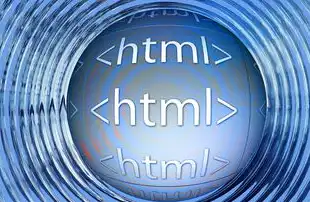本文目录导读:
- Understanding the Basics of HTML for Music Websites
- Building the Layout with HTML
- Integrating Audio Features
- Enhancing User Engagement with Interactive Elements
- Optimizing for Mobile Devices
- Ensuring Accessibility
- Conclusion
Creating an engaging and interactive music website using HTML is not just about coding; it's about crafting an immersive experience that resonates with your audience. This comprehensive guide delves into the intricacies of building a dynamic HTML music site from scratch, offering insights, tips, and best practices to ensure your project stands out in the digital music space.
Understanding the Basics of HTML for Music Websites
Before diving into the code, it’s crucial to understand the fundamental role HTML plays in structuring web content. For a music website, this includes organizing tracks, playlists, artist information, and user interactions like play, pause, and volume control.
Key Elements:
- Headings: Use
<h1>to <h6>tags to create a clear hierarchy of content. - Paragraphs: Utilize
<p>tags for descriptive text about artists or albums. - Images: Insert album covers or artist photos with
<img>tags. - Links: Embed links to purchase music or visit artist pages using
<a>tags. - Lists: Organize track listings or genres with unordered (
<ul>) or ordered (<ol>) lists.
Building the Layout with HTML
The layout forms the backbone of your music website. It should be visually appealing and intuitive, guiding users seamlessly through their musical journey.

图片来源于网络,如有侵权联系删除
Structure:
- Header: Contains navigation links and possibly a logo or search bar.
- Main Content: Displays featured tracks, playlists, or artist bios.
- Footer: Provides additional links or copyright information.
<!DOCTYPE html>
<html lang="en">
<head>
<meta charset="UTF-8">
<meta name="viewport" content="width=device-width, initial-scale=1.0">
<title>Musical Haven</title>
<link rel="stylesheet" href="styles.css">
</head>
<body>
<header>
<!-- Navigation and Logo -->
</header>
<main>
<section class="featured-tracks">
<!-- Featured Tracks -->
</section>
<section class="artist-bios">
<!-- Artist Bios -->
</section>
</main>
<footer>
<!-- Footer Links -->
</footer>
</body>
</html>
Integrating Audio Features
To make your music website truly interactive, integrating audio playback features is essential. This involves embedding players that allow users to listen to songs directly on your site.
Using <audio> Tag:
The <audio> tag allows you to embed audio files within your HTML. You can specify multiple formats to support different browsers.
<audio controls>
<source src="song.mp3" type="audio/mpeg">
Your browser does not support the audio element.
</audio>
Advanced Audio Control:
For more advanced functionalities like playlist management, consider using JavaScript libraries such as Plyr or SoundManager2.
Enhancing User Engagement with Interactive Elements
Interactive elements are pivotal in creating a memorable user experience. These include features like rating systems, comment sections, and social sharing options.
Implementing Comments:
Allow users to leave comments on tracks or posts by incorporating a simple form.

图片来源于网络,如有侵权联系删除
<form action="/submit-comment" method="post">
<textarea name="comment" rows="4" cols="50"></textarea>
<input type="submit" value="Post Comment">
</form>
Social Sharing Buttons:
Integrate social media buttons to enable easy sharing of music across platforms.
<div class="social-share">
<a href="#" class="btn-facebook">Facebook</a>
<a href="#" class="btn-twitter">Twitter</a>
<a href="#" class="btn-instagram">Instagram</a>
</div>
Optimizing for Mobile Devices
With the majority of internet traffic coming from mobile devices, ensuring your music website is responsive is non-negotiable.
Responsive Design Principles:
- Use flexible grids and layouts.
- Employ media queries to adjust styles based on screen size.
- Optimize images and scripts for faster loading times.
@media only screen and (max-width: 600px) {
/* Adjust styles for mobile view */
}
Ensuring Accessibility
An inclusive design ensures that all users, including those with disabilities, can access and enjoy your music website.
Best Practices:
- Use semantic HTML tags for better screen reader compatibility.
- Provide alt text for images and audio descriptions.
- Ensure keyboard navigability throughout the site.
Conclusion
Building a music website using HTML requires careful planning, attention to detail, and a commitment to providing an exceptional user experience. By following these guidelines and continuously iterating on your design, you’ll create a platform that not only showcases your passion for music but also connects deeply with your audience. Remember, every element, from the layout to the interactive features, contributes to the overall narrative of your musical brand.
标签: #html音乐网站源码



评论列表